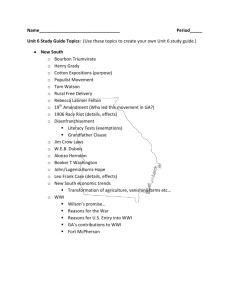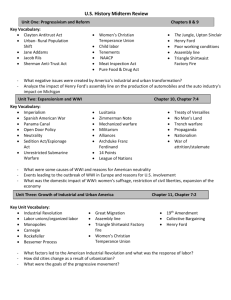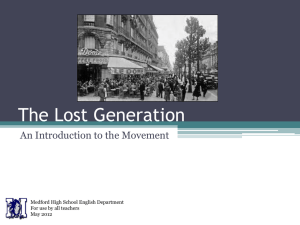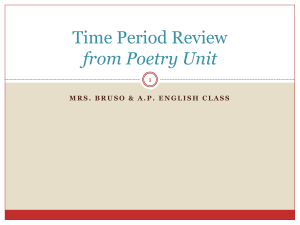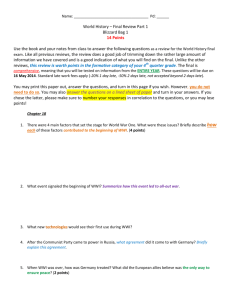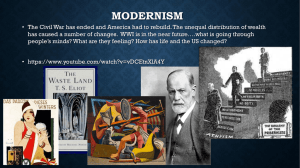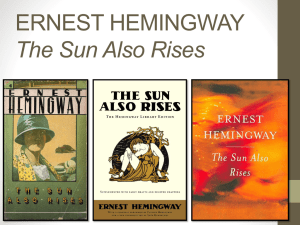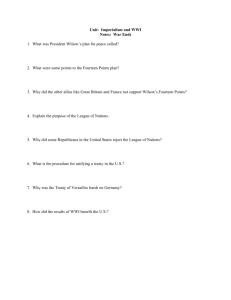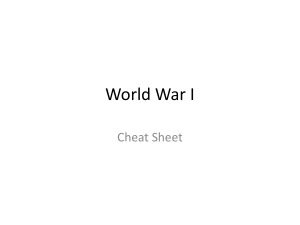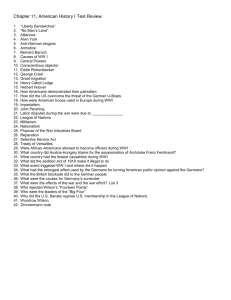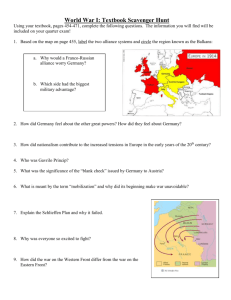The Modern Age (1915
advertisement
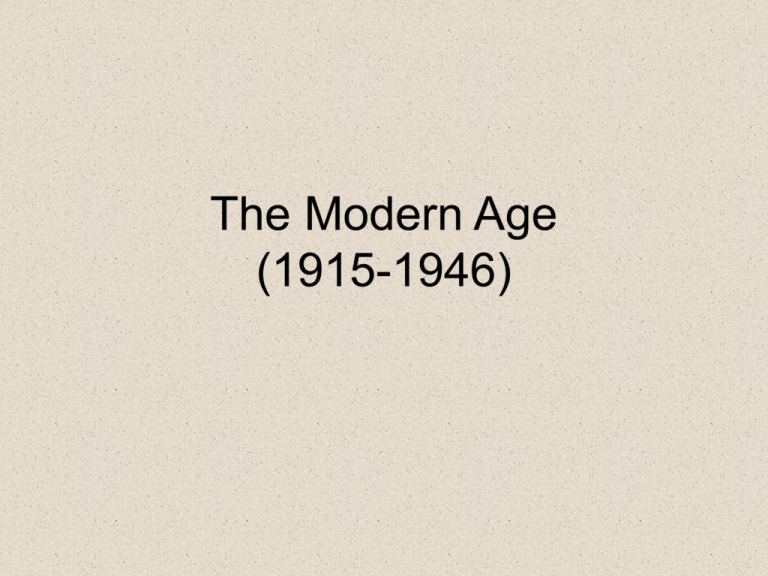
The Modern Age (1915-1946) Historical Background • US rose to become a world power politically and economically • However, Roaring Twenties, the Great Depression, WWI and WWII significantly affected the mood of the American people • America was becoming dominant, but losing youthful innocence and brash confidence • Early 1900s saw a period of artistic experimentation Historical Setting • Before WWI (1912) began, there was a great sense of optimism in US – Numerous technological advances – Sense of a promising future • Still some social problems in US, but some reform policies were in place • Outbreak of WWI forced President Woodrow Wilson to divert his attention from US to Europe World War I Axis vs. Allies • Originally, Pres. Wilson wanted US to remain neutral (impossible) – Lusitania sunk by Germans (128 Americans dead) • Machine gun and trench warfare causes war to drag on for several years • Submarine warfare ultimately led to US involvement • Many writers saw bloody battles including Hemingway, E.E. Cummings, John Dos Passos, which influenced what was written Prosperity and Depression • Period immediately following W W I was marked by much unrest in US – Prohibition • Throughout 1920s, economy rebounded and cities grew – – – – Large, booming cities Movie palaces throughout US Radio arrived (so did Jazz) Fads: raccoon coats, flagpole sitting, the Charleston • 1929---Stock Market Crashed and Depression set in • President Hoover fails • FDR elected President • Circumstances began to improve by late 30s and early 40s, but never as good as the Roaring Twenties World War II Axis vs. Allies (part 2) • Twenty years after WWI ended, Germany invaded Poland to begin WWII • US again wanted to remain neutral (impossible) – Japan attacked Pearl Harbor on Dec. 7, 1941 – Allies defeat Nazi Germany and drop atomic bombs on Japan Birth of Modernism • After W W I, most people lost sense of optimism; felt uncertain about future and disillusioned • People were searching for new ideas Modernism • While there was an increase in diverse literature, modernists shared a common purpose – Capture modern life (fragmented) • Omitted traditional forms of stories (exposition, resolutions, etc..) • Themes were implied, not stated (forced readers to draw their own conclusions) Imagism • Poetic movement (1909-1917) • Poetry used clear expression, concrete images, and language of everyday speech • Early leader of this movement was Ezra Pound Expatriates • Because many people were disillusioned with life after W W I, many American writers became expatriates • Left US to live elsewhere (Paris) • Gertrude Stein called them the “lost generation” – Hemingway, Fitzgerald, Pound, Eliot New Approaches • Stream of Consciousness Technique – Re-creating the natural thought flow of a character (not necessarily linear) – Ideas presented are done in a way that is natural for the character (natural associations) International Renown • Nobel Prize for Literature established in as international award in 1901 by Swedish inventor of dynamite, Alfred Nobel • Sinclair Lewis was 1st American to win it (1930) • Other winners: Eugene O’Neill; Pearl S. Buck (The Good Earth); Faulkner; Hemingway; Steinbeck Harlem Renaissance • 1921---rise of African American writers • Harlem, New York

